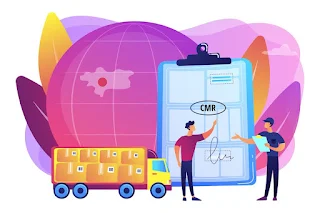In the
dynamic landscape of modern supply chain management, businesses are
increasingly turning to innovative solutions to enhance visibility, streamline
operations, and fortify resilience. At the forefront of this transformation is
the concept of Control
Towers — a sophisticated approach that acts as the nerve centre,
orchestrating and optimizing supply chain activities. In this article, we
explore the pivotal role of control towers and how they contribute to elevating
supply chain visibility and resilience.
Unlocking the Power of Control Towers
1. Control
Tower Supply Chain Management:
- Holistic Oversight: A
control tower provides end-to-end visibility across the supply chain,
offering a consolidated view of all relevant data and processes.
2. Enhanced Visibility and Transparency:
- Real-time Monitoring: By
integrating data from various sources, control towers enable real-time
monitoring of inventory, orders, and shipments, empowering businesses with
actionable insights.
3. Proactive Issue Resolution:
- Early Detection:
Control towers use advanced analytics and predictive modelling to detect
potential disruptions early, allowing for proactive issue resolution and
minimizing the impact on operations.
4. Dynamic Decision-Making:
- Agile Response: The
real-time data provided by control towers facilitates agile
decision-making, allowing supply chain managers to respond swiftly to
changing market conditions and unforeseen challenges.
5. Streamlined Collaboration:
- Cross-functional Connectivity:
Control towers break down silos by fostering collaboration between
different departments and stakeholders, promoting seamless communication
and coordination.
The Core Components: Understanding the Command
Center
1. Data Integration and Analytics:
- Unified Data Platform:
Control towers integrate data from diverse sources, creating a unified
platform that enhances visibility and supports data-driven
decision-making.
2. Automation and AI:
- Intelligent Automation:
Leveraging artificial intelligence (AI) and automation, control towers
streamline routine processes, reduce manual intervention, and improve
operational efficiency.
3. Scenario Planning:
- Risk Mitigation:
Control towers use scenario planning to simulate various situations,
allowing businesses to identify potential risks and develop strategies for
effective risk mitigation.
Conclusion: Elevating Supply Chain Management to New Heights
In conclusion, control towers serve as a
command centre, transforming supply chain management from a reactive to a
proactive and strategic function. By embracing these centralized solutions,
businesses can enhance visibility, improve collaboration, and fortify their
supply chains against disruptions. The integration of advanced technologies,
coupled with a comprehensive understanding of control tower principles,
positions businesses to navigate the complexities of the modern supply chain
landscape successfully. As the command centres continue to evolve, their role
in shaping resilient and responsive supply chains becomes increasingly
indispensable, ensuring that businesses are equipped to thrive in an
ever-changing marketplace.
For original Post Content: https://myvipon.com/post/887562/Commanding-The-Role-Control-Towers-Elevating




No comments:
Post a Comment
Note: only a member of this blog may post a comment.